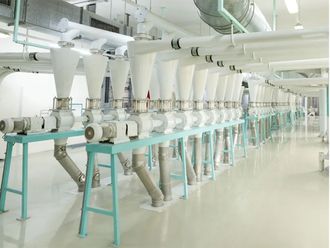As will undoubtedly have been carried elsewhere in these pages, regional stock markets have experienced mixed fortunes recently in the face of a host of local and international influences.
While globally an overhanging uncertainty prevails over the sluggishness of world economic recovery and the imminent curtailment of the US’s quantitative easing, among local bourses offsetting factors have made their presence felt.
For instance, the implementation of MSCI’s upgrade of the UAE’s and Qatar’s status from “frontier” to “emerging” was bound to create some reaction and repositioning, even though naturally discounted to an extent in advance.
Equally, the decision by Saudi Arabian authorities that the Tadawul index would become increasingly accessible to foreign investors naturally caused excitement as a structural shift of even greater profundity — one to be backed additionally by further economic reforms.
Moreover, the re-emergence of IPO activity in the Gulf in this third quarter of the year has created a buzz of enthusiasm, while also inviting rotational behaviour that merely shifts the weight of investment from secondary to primary trading.
The heightening of political, military and security issues in the region naturally are playing their part too.
On balance overall, sentiment as to the outlook seems quite favourable still.
Assessing the mood, Thomson Reuters correspondent Nadia Saleem referred me to “the perception from long-term investors that the medium-term macro picture remains intact and positive, despite Middle East political turmoil, as long as GCC governments continue to spend on infrastructure projects. The market seems confident that budget surpluses will be able to ride out a short-term drop in oil prices, but it remains a key factor, watched closely. Unless and until we see a sharp drop in global equities, the backdrop is benign.”
As to trading volumes, the latest monthly research round-up from Emirates NBD discerned that the GCC’s equity markets “continued to see an increased interest from investors”, with daily turnover for the DFM and Qatar Exchange much amplified this year compared to last, as well as the Tadawul’s 46 per cent climb on the same basis in the past month since the Capital Market Authority’s announcement.
According to Aditya Pugalia, analyst at the bank, the Saudi market could witness an influx of some $35 billion (Dh128.5 billion) if and when plans are enacted next year as stated, a figure based on raising foreigners’ share from the current 2.5 per cent to the average 9 per cent they otherwise hold around the region. Furthermore, an MSCI upgrade could follow, bringing another slew of funds flow. Happily, this “incremental liquidity … could provide a significant boost [to] other regional markets”.
Cultural reasons
That said, such simple translations cannot be taken for granted. Moreover, there is reason to believe that, as in many matters of international comparison, what is assumed or understood of one locale need not necessarily apply in another, most obviously for cultural reasons or other behavioural matters of established norm.
A recent academic paper by regional researcher Syed Basher focuses on the intrinsic volatility of the Gulf region’s indexes, and explored their derivation, with notable findings for interpreting their movement that should inform investor understanding and portfolio management.
Concentrating on the concept of the equity risk premium, which is the reward to be found in stocks rather than “risk-free” bonds, the author finds that over the latest ten-year annual period of 2004-13, Dubai led the way with a premium of 8.6 per cent, which however resulted particularly from the surge of over 100 per cent in 2013 itself.
Yet, as Basher reminds, those returns are nominal figures, making no allowance for inflation. For domestic investors, affected by price pressures at home in the GCC countries, the numbers become low or negative in real terms, making the stock market not so lucrative as a destination for investment. Whereas “one can certainly generate money from short-term volatility”, long-term investors viewing that precedent, including pensions funds, “should proceed with caution”, he advises.
It’s a significant caveat, perhaps to be qualified only by the supposition that the structural evolution of the markets themselves may improve the reliability of their performance, which may be of comfort — plus the incidental but not irrelevant observation that the notion of the risk-free asset (typically taken to be US Treasury bond) is itself not so dependable, and therefore may induce an extra level of worry!
Additionally, everything is relative, and the prospect for stocks at this point might well be better over the medium term than for bonds, given the positions reached today. Further, equities can still to some degree provide protection against inflation, provided it remains moderate and not disruptive.
Of equal note to investors right now might be that global stocks could be fraying at the edges, as reality catches up with and exposes the disguise created by the monetary cloak. Only if that dam breaks, itself unknown, will we know whether the Gulf can sustain a separate and better narrative.












